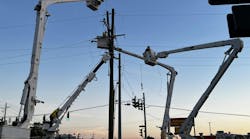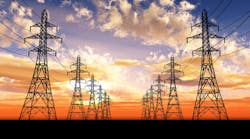RMEL’s Distribution Engineers Workshop will be held on Feb. 13-14, 2014 at the Denver Marriott South at Park Meadows in Lone Tree, Colorado.
This workshop is designed to give engineers training and real world knowledge of important topics that are encountered in their industry. Attendees will have a unique opportunity to hear from a wide range of utilities during this event.
Engineers involved in distribution will find this course helpful. In addition, supervisory or management personnel who desire a review of distribution practices and standards, or who are new to power distribution, will benefit from this course.
Distribution Overcurrent and Coordination
Hemanth Jala, Product Portfolio Manager, S&C Electric
This will be an overview of Distribution Overcurrent Protection and Coordination. The presentation will cover basics of overcurrent protection, overview of types of protective devices, parameters for selection of protective devices, introduction to Time Current Characteristic (TCC) curves & coordination of various protective devices.
Cable Pulling Techniques
Farris Jibril, Electric Distribution Engineering Manager, Westar Energy
Methods to install underground cable system will be discussed. Significant emphasis will be placed on proper cable installation and cable pull analysis.
Distributed Generation
Wayne Hartmann, Protection & Smart Grid Solution Manager, Beckwith Electric Company
This presentation will explore different types of DG (inverter, synchronous and induction), describe DG’s uses (energy and demand reduction), control styles and DG interconnection protection design. Application to meet IEEE 1547 guidelines will be addressed. This workshop will be beneficial for distribution engineering and operations personnel.
Effects of Harmonics and Transients on Transformers
Andrew Sagl, Product Manager, Megger
This presentation will define and discuss the different Power Quality phenomenon. Various types of short duration voltage variations shall be reviewed as well as CBEMA and SEMI F47 analysis methods. Different types of transients and their causes shall be discusses as well as their effect on insulation and transformers. The effects of unbalance shall be examined as well as the various methods of calculating Unbalance shall be reviewed. Harmonic orders and harmonic sequences and causes of harmonics shall be discussed. The paper shall also cover the heating effects Harmonics have on transformers, covering winding loss as well as core loss. The definition and calculation of K Factor, used in Transformer de-rating shall be discussed.
Understanding Soils and How They Affect Electric Utility Systems
Zack Heim, Manager, Grid Development, DiGioia Gray and Associates
Soils, the environment and electric utility structures interact in ways which need to be understood and accounted for during design to insure continued system reliability and economy. A discussion will be provided on common soil materials, their behavior relevant to electric utilities and design considerations therein. Case studies demonstrating the effects of soil behavior on electric utility facilities will be provided. This information will illuminate the means by which an understanding of soil behavior in design can promote project success or plant the seeds of success for future maintenance projects. This information will provide examples applicable to both overhead and underground distribution and transmission systems.
Utility Pole Strength and Loading – Theory and Practical Application
Matt Gardner, Manager, Engineering Support, Osmose Utilities Services, Inc
This presentation will cover two important aspects of utility pole design and in-service evaluation: pole strength calculations and pole loading calculations. An overview of the theory behind both types of calculations will be reviewed along with an overview of the codes and standards that contain the requirements, the NESC and ANSI O5.1. The effect of applied loads due to wind, ice and wire tension will be considered along with the impact of pole strength loss due to deterioration or damage. To show how these calculations are performed in practice, two software applications will be demonstrated.
Motor Starting Considerations for Transformers
Bill Galloway, Standards Managing Engineer, Colorado Springs Utilities
Motors can present damaging load current to transformers if they are not sized correctly. Transformers may need to be sized to handle up to twice the motor’s full load kVA for full voltage starting. This presentation will cover the proper selection of transformers feeding motor loads.
Guy Anchors – Application and Theory
Tim Staelens, Product Manager – Anchoring, Hubbell Power Systems
Reliability of aerial construction is highly dependent on the guying and earth anchors systems. When an anchor fails due to overloading, utilities can experience damage to the aerial plant facilities, high repair costs and service interruptions. Installation and repair costs can be controlled by selecting the correct anchor and using proper installation techniques. Topics covered in workshop include: types of guy anchors used in utility applications, soil classification and anchor holding capacity, how to pick the correct anchor, anchoring tips.
Product Evaluation Considerations for Electric Distribution Equipment
Bill Galloway, Standards Managing Engineer, Colorado Springs Utilities
This presentation will describe some of the basic elements to performing a product evaluation. It will cover some of the tools, techniques, standards and codes that are used. The importance of performing a lifecycle cost/benefit analysis, obtaining user feedback, getting buy in from internal users, performing a field trial, incremental adoption into the system, and some lessons learned.
Lightning Protection and Insulation Coordination
Farris Jibril, Electric Distribution Engineering Manager, Westar Energy
This session provides engineers with a fundamental understanding of lightning protection and equipment insulation coordination. Insulation coordination is the selection of the dielectric strength of equipment in relation to the operating voltages and over-voltages.
Equipotential Grounding
Anthony Cook, Safety Consultant, Xcel Energy
This presentation will review the OSHA requirements regarding protective grounding. There will be a brief overview of the effects of electricity on the human body and the research behind it. There will be discussion on the fundamentals of electrical circuits and show how they tie in with equipotential grounding. Tony will also briefly discuss how equipotential grounding works and how it compares to bracket grounding.
Does Your Utility Need a Planning and Design Guide? YES!
Jeff Hanson, Colorado Springs Utilities
The Distribution Planning and Design Guide is a comprehensive document providing direction on the overall design of the electric distribution systems owned and operated by Springs Utilities. The Distribution Planning and Design Guide is to be used in conjunction with the electric tariffs, service standards and electric material standards in the overall design of electric system extensions and infrastructure enhancements. The design guide includes design direction in the following areas: system planning, system design philosophy, overhead distribution system, underground distribution system, and distribution system protection.
Distribution Capacitors Placement and Design
Chris Lindsey, Energy Services Supervisor, UNS Energy Corporation
Attendees will receive a continuing education certificate worth 16.0 Professional Development Hours.

